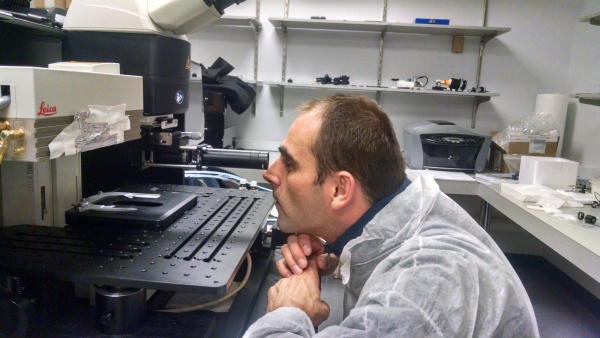Working visit to the Department of Pharmacology, Case Western Reserve University, Cleveland USA.
Two-photon excitation fluorescence (TPEF) imaging of the back of the eye allows visualization of subcellular structures in the living animal eye. This method is helpful for investigating mechanisms of retinal diseases and development of ophthalmic therapies. Endogenous fluorophores, necessary for replenishing visual chromophore, and thus sustaining vision have absorption maxima in the range from 320 – 400 nm. However, anterior optics of the animal eye poorly transmit light at those wavelengths. Two-photon excitation fluorescence imaging employing 75 fs laser pulses overcomes this barrier and visualizes subcellular organelles in the living animal eye.
The aim of the working visit was to improve the quality of TPEF and reduce laser power needed for imaging by further reduction of the duration of excitation pulses. Reduced pulse duration is associated with increased bandwidth of the laser, thus dealing with the dispersion by the optical elements becomes more difficult. For such a short pulses as 20 fs the higher order dispersion (higher than group delay dispersion GDD) become significant, thus traditional dispersion compensation techniques, like chirped mirrors, pairs of gratings or prisms often fail to give satisfactory results, especially in the case of complicated, commercial microscope setup. We used Multiphoton Intrapulse Interference Phase Scan (MIIPS) technique to solve the problem of the setup dispersion.
For shorter pulses and the same average excitation power we obtain signals more than 3.5 times higher than with the longer pulse excitation.
During this visit dr Patrycjusz Stremplewski performed in the Department of Pharmacology both in vivo and ex vivo tests.
Visitor
Patrycjusz Stremplewski
Dates
April 22-28, 2017
June 5-11, 2017
Location
Cleveland, USA



